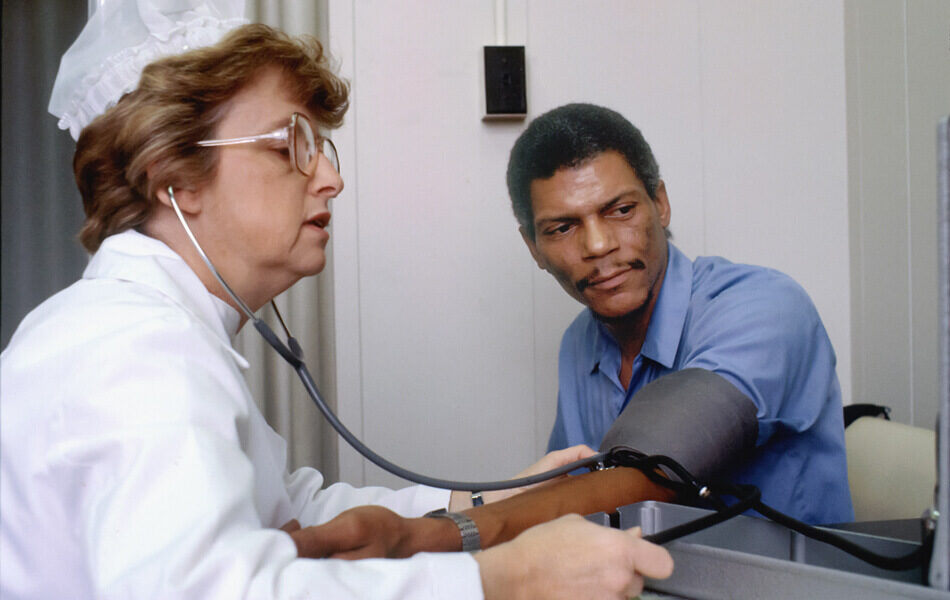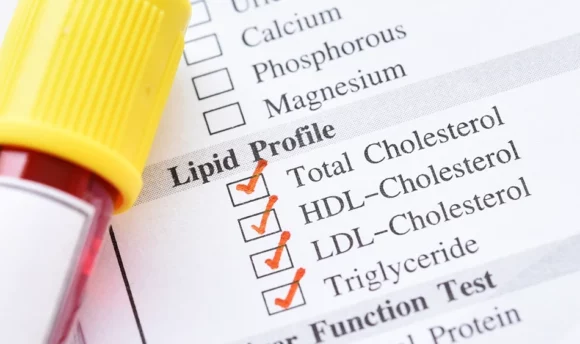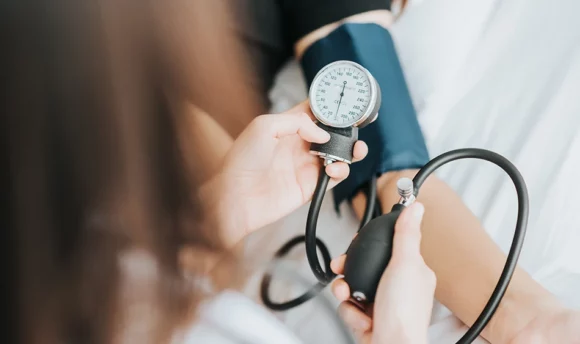When Is Low Blood Pressure an Emergency? A Cardiologist Explains
Discover how to tell if you have low blood pressure, how to interpret blood pressure readings, what the symptoms are, and what causes them. Also, find out when your blood pressure markers are a sign you need a checkup.

Excessive calorie restriction or intense exercise can lead to headaches, dizziness, or even fainting in some people. This happens when your blood pressure drops and your heart and brain do not receive enough nutrients and oxygen, along with your other vital organs.
Often, as we strive to reach our weight loss goals, we forget what our bodies need to function properly. You need a smooth blood circulatory system to ensure that nutrients reach every part of your body. If it’s not working properly, nothing will work.
A reliable indicator of the rate at which nutrients are supplied to the tissues is blood pressure. Understanding blood pressure readings and what can cause changes in blood pressure is essential for having good health.
Here’s everything you need to know about low blood pressure, how and why it occurs, and when you should be concerned.
5 Signs That Low Blood Pressure Is An Emergency
#1 Loss of consciousness
#2 Weak pulse
#3 Rapid and shallow breathing
#4 Blurry vision
#5 Cold or sweaty skin
How to Know When Low Blood Pressure Is an Emergency?
Heat, stress, pain, allergic reactions, and other factors cause your blood pressure to fluctuate throughout the day. Normally, it returns to normal without any special treatment or medication.
A single reading of lower-than-normal blood pressure is not a medical emergency unless it persists or you experience other uncomfortable symptoms or complications. If left untreated, low blood pressure can cause a number of adverse effects, which include both mental and physical health complications.
These are the 5 most common symptoms of very low blood pressure that signal a medical emergency.
#1 Loss of consciousness
If your blood pressure is too low, your brain will not get enough oxygen, and you will faint. Overheating, dehydration, heavy sweating, and exhaustion are a few of the non-life-threatening conditions that can lead to loss of consciousness. Fainting can be caused by many things, so you should seek medical attention to figure out what the problem is.
#2 Weak pulse
Slow heartbeat is another common symptom of hypotension. Weak heart rate means less than 60 beats per minute in adults, except for athletes whose heart rates can be slower than 60 BPM. A low heart rate and low blood pressure, known as bradycardia, can lead to heart failure.
#3 Rapid and shallow breathing
Shallow breathing (tachypnea) can result from chronic low blood pressure and cause serious health problems. If the breathing difficulty is accompanied by chest pain and rapid pulse, it is likely that a person has severely low blood pressure and needs urgent medical assistance.
#4 Blurry vision
When arterial blood pressure changes relative to eye pressure, poor blood flow to the optic nerve may cause an eye stroke. Because the optic nerve’s nutrient and oxygen supply is cut off, sensory nerve tissue gets damaged and lost, resulting in blurred or lost vision. The same might happen as a result of high blood pressure too.
#5 Cold or sweaty skin
Shock from injuries, such as breaking a bone or getting hit in the head, can trigger cold sweats because organs lack sufficient oxygen. Pale skin, rapid pulse, together with blood pressure drop can indicate a high risk of heart failure and require immediate medical attention.
What Is Low Blood Pressure (Hypotension)?
Hypotension, or low blood pressure, is a condition where your blood has difficulty passing through your blood vessels and into your vital organs to deliver nutrients and oxygen.
Blood pressure is measured in millimeters of mercury (mmHg) using two markers. When your heart beats, blood flow generates a certain amount of pressure on the artery walls (systolic pressure or upper marker). That pressure is a little lower when your heart rests (diastolic pressure or lower marker).
Ideal blood pressure for an average person is between 90/60mmHg and 120/80mmHg (systolic BP of 120mmHg and diastolic BP of 80mmHg). If you have a blood pressure reading of less than 90/60mmHg, that is below normal.
What Are the Symptoms of Low Blood Pressure?
Low blood pressure symptoms such as lack of concentration, short breath, confusion, fainting, blurred vision, and weak pulse can seriously impair your mental and physical health.
Having low blood pressure affects your brain in the first place. You might find it hard to concentrate and not want to move around much.
You can experience other noticeable symptoms if you fail to treat low blood pressure on time. You might notice your vision fading or your skin becoming cold or sweaty. In extreme cases, you might feel short of breath and even faint.
Symptoms such as these should prompt you to check your blood pressure and seek medical attention. It is recommended to check your level twice a day prior to breakfast, before taking medications, and at the end of the day if it fluctuates frequently.
What Causes Low Blood Pressure?
Low blood pressure can be caused by an inadequate diet or activity level, an underlying medical condition, or certain medications. Such conditions as heart attack, heart valve disease, or heart failure can also be the cause of it.
An underlying cause of low blood pressure is adrenal fatigue or deficiency in vitamin B1. In medical terms, orthostatic hypotension is a decrease in systolic BP of 20mmHg or a decrease in diastolic pressure of 10mmHg within the first 3 minutes of getting up. In the same way, prolonged bed rest might make things worse.
Lack of fluids and salt in your diet, or fasting, can lead to decreased blood volume and low blood pressure. Too much exercise, vomiting, severe diarrhea, and water pills or alpha-blockers can make you dehydrated and lower your blood pressure.
Fasting can result in a lack of sodium and lower blood pressure. However, you can easily regulate blood pressure by taking electrolytes to keep your nerves and muscles in good working order.
People with high blood pressure and autonomic nerve diseases, including Parkinson’s, often experience a drop in blood pressure after eating. This is called postprandial hypotension.
Long standing can also be the cause of low blood pressure in young adults, and they might even faint. Known as neurally mediated hypotension, this occurs when you stand still for too long, and your systolic BP drops by 20–25mmHg.
High blood pressure medications, antidepressants, and erectile dysfunction drugs, as well as malfunctions of hormone-producing glands, or low blood sugar levels, can all result in low blood pressure.
Nutritional deficiencies can also cause chronic low blood pressure. A lack of energy and pale skin may indicate anemia, which is caused by inadequate vitamin B12 and folic acid intake.
FAQs
Low blood pressure is a sign that your vital organs such as the brain, heart, and kidneys are not receiving enough oxygen and nutrients. If you feel discomfort, take your blood pressure and see how far it is from normal 120/80mmHg.
If you are experiencing persistent headaches, shortness of breath, sweating, fading eyesight, or fainting along with low blood pressure, you should contact your healthcare provider.
Low blood pressure may be caused by underlying medical conditions, such as heart, kidney, or brain disorders, or by less severe conditions, such as dehydration, low salt levels, and other nutritional deficiencies.
Having a sudden drop in your blood pressure and a reading of less than 90/60mmHg can be risky to your health, and you should seek emergency medical help.
Low blood pressure can be caused by many factors, including stress, dehydration, fasting, inadequate salt intake, shock, injury, underlying medical conditions, and blood loss. In some cases, blood pressure may fall out of range briefly but return to normal shortly after. However, if the symptoms persist, you should seek medical attention.
Getting a headache when you have low or high blood pressure is one of the first symptoms of underlying medical conditions. Generally, headaches associated with low blood pressure last 15 minutes to one hour. If headaches persist for more than a few hours, consult your healthcare provider.
A Word From Our MD
Check your blood pressure regularly. People with hypertension can use home devices to monitor their response to therapy, exercise, and medications. They give accurate information and help improve blood pressure management.
Make a habit of measuring your blood pressure every morning and every evening at home for a week. When your blood pressure readings fall within the recommended range, 2 to 3 blood pressure checks per week are sufficient. A single reading above this range isn’t worrying.
Try to get a device that automatically inflates and records the pressure of the upper arm. The inflatable part should cover at least 80% of your bare upper arm. This ensures the most accuracy and ease of use.
Test the cuff in the store to make sure it is easy to use. The reading will be too high if it ends up too small.
Blood pressure monitors attached to the wrist or finger are not recommended by the American Heart Association since they are not as reliable.
Conclusion
It may be time to look closely at the lifestyle or needs of your body if your blood pressure drops below normal.
In most cases, hypotension can be attributed to unhealthy habits such as not drinking enough water, not managing your diet, not exercising properly, etc. Low blood pressure combined with life-threatening severe symptoms such as weak pulse or loss of consciousness may trigger a heart attack.
Taking responsibility for your health can be as simple as a habit of checking blood pressure 2–3 times a week instead of dealing with health complications later.
To avoid medical emergencies and fatal outcomes, you should diagnose and treat hypotension at the right time after you notice any of the severe symptoms we talked about.

















































 Select your language:
Select your language: 








